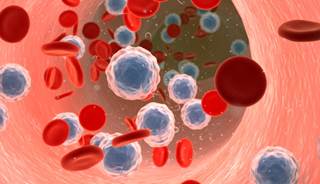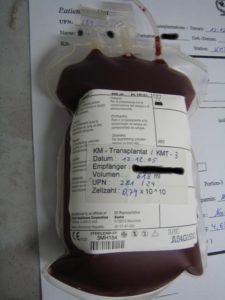Does the newly diagnosed multiple myeloma (NDMM) patient who achieves minimal residual disease (MRD) after induction therapy live longer, on average, that NDMM patients who do not?
Though the study linked below does not say this, it does report a number of positives for those NDMM patients who may not want to have an autologous stem cell transplant (ASCT). And the toxicity associated with high-dose, aggressive therapy.
The bullet points below speak to the two main issues that MM patients who are mid-induction therapy might be thinking about- namely, overall response and degree of response achieved.
This trail showed 100% response. All 41 patients responded. 71% of patients achieved MRD.
All metrics indicate that this combination of chemotherapy regimens gives newly diagnosed MM patients (NDMM) exceptional responses.
The question is, do the 41 NDMM patients achieve a high quality-of-life and the longest possible length-of-life? In other words, yes, a great response to your first chemo cocktail is great. But are you going to live better, longer lives after all this toxicity???
This study is exactly what Dr. Rajkumar is talking about in his essay below.
Operational and/or functional cure are terms that oncology uses to talk about the benefits of a long PFS.
Are you a newly diagnosed MM patient? Are you wondering about the pros and cons of an autologous stem cell transplant? Scroll down the page, post a question or a comment and I will reply to you ASAP.
Combination therapy with Kyprolis (carfilzomib), Revlimid (lenalidomide), dexamethasone and Darzalex (daratumumab) for patients with newly diagnosed multiple myeloma contributed to high rates of minimal residual disease negativity and progression-free survival, according to findings from a trial published in JAMA Oncology.
In this single-center, phase 2 trial, researchers analyzed data from 41 patients (median age, 59 years; 61% women; 49% high-risk multiple myeloma) with newly diagnosed multiple myeloma.
All patients were treated with weekly Kyprolis, Revlimid, dexamethasone and Darzalex using a specific dosing schedule, all of which was completed within eight 28-day cycles.
Researchers assessed the rate of minimal residual disease (very small number of cancer cells in the body during or after completing treatment) negativity after patients completed eight cycles of weekly Kyprolis, Revlimid, dexamethasone and Darzalex…
Follow-up was conducted for a median of 11 months.
This trial was considered successful, according to the researchers, because minimal residual disease negativity occurred in 71% of patients. This was achieved in a median of six cycles of treatment.
The overall response rate for patients in the trial was 100%, with a very good partial or complete response rate of 95%. The progression-free survival at one year was 98% with an overall survival rate of 100%.
The most common severe or life-threatening side effects included rash (9%), low number of a type of white blood cell called neutrophils (27%), increased alanine aminotransferase level indicating liver damage (4%) and lung infection (7%). No deaths occurred during the trial.
“Building on these promising results, we have developed a large randomized multicenter clinical trial (ADVANCE) comparing (weekly Kyprolis, Revlimid, dexamethasone and Darzalex) with current standard of care for patients with newly diagnosed multiple myeloma, and the trial has already opened for enrollment,” the study authors wrote.”
“Although not often openly acknowledged, “cure vs control” is the dominant philosophical difference behind many of the strategies, trials, and debates related to the management of myeloma.
Should we treat patients with myeloma with multidrug, multitransplant combinations with the goal of potentially curing a subset of patients, recognizing that the risk of adverse events and effect on quality of life will be substantial?
Or should we address myeloma as a chronic incurable condition with the goal of disease control, using the least toxic regimens, emphasizing a balance between efficacy and quality of life, and reserving more aggressive therapy for later?
To be sure, if cure were known to be possible (with a reasonable probability) in myeloma, it would undoubtedly be the preferred therapeutic goal of most patients and physicians. But this is not the case. Myeloma is generally not considered a curable disease; however, new definitions of cure have been suggested,
including operational cure, which is defined as a sustained complete response (CR) for a prolonged period.1,2
Cure vs control is debated because the strategies currently being tested are not truly curative but rather are intended to maximize response rates in the hope that they will translate into an operational cure for a subset of patients…”




